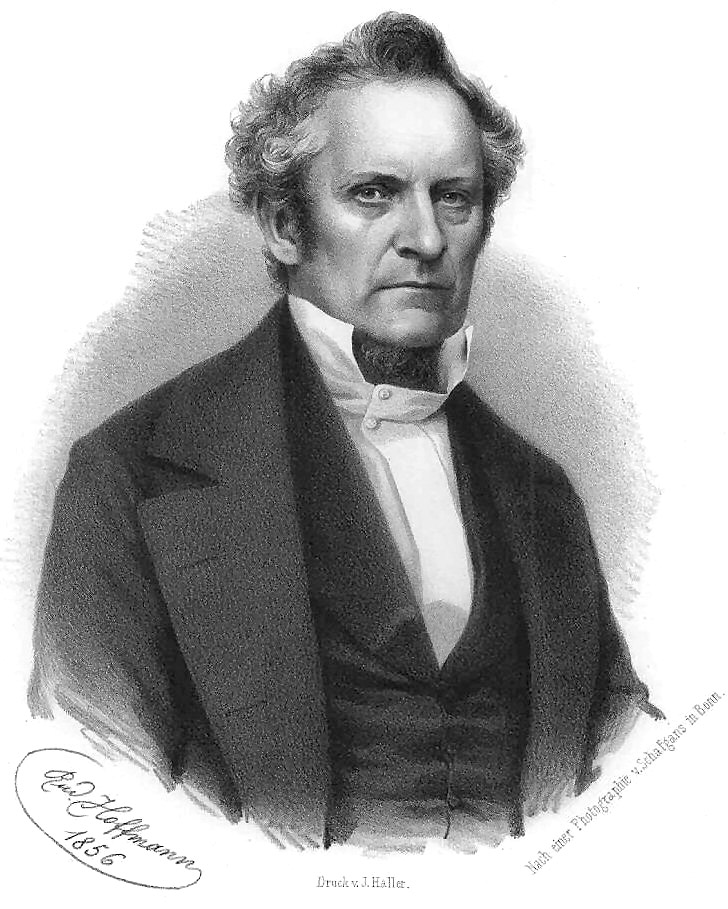- Julius Plücker
Infobox_Scientist
name = Julius Plücker
 |300px
|300px
image_width = 300px
caption = Julius Plücker
birth_date = birth date|1801|6|16|mf=y
birth_place =Elberfeld ,Duchy of Berg
death_date = death date and age|1868|5|22|1801|6|16|mf=y
death_place =Bonn ,Germany
residence =
nationality =
field =Mathematician
work_institution =University of Bonn University of Berlin University of Halle
alma_mater =University of Bonn University of Heidelberg University of Berlin University of Paris University of Marburg
doctoral_advisor =Christian Ludwig Gerling
doctoral_students =Felix Klein August Beer
known_for =Plücker formula
prizes =Copley Medal (1866)
religion =
footnotes =Julius Plücker (
June 16 ,1801 –May 22 ,1868 ) was a Germanmathematician andphysicist . He made fundamental contributions to the field ofanalytical geometry and was a pioneer in the investigations ofcathode ray s that led eventually to the discovery of theelectron . He also vastly extended the study of Lamé curves.Life and work
Plücker was born at
Elberfeld (now part ofWuppertal ). After being educated atDüsseldorf and at the universities ofBonn ,Heidelberg andBerlin he went toParis in 1823, where he came under the influence of the great school of French geometers, whose founder,Gaspard Monge , was only recently dead. In 1825 he returned to Bonn, and in 1828 was made professor of mathematics. In the same year he published the first volume of his "Analytisch-geometrische Entwickelungen", which introduced for the first time the method ofabridged notation . In 1831 he published the second volume, in which he clearly established on a firm and independent basisprojective duality .In 1847 Plücker was made professor of physics at Bonn. In 1858 he published the first of his classical researches on the action of the magnet on the electric discharge in rarefied gases. He found that the discharge caused a fluorescent glow to form on the glass walls of the vacuum tube, and that the glow could be made to shift by applying an electromagnet to the tube, thus creating a magnetic field. It was later shown that the glow was produced by cathode rays.
Plücker, first by himself and afterwards in conjunction with Johann Hittorf, made many important discoveries in the spectroscopy of gases. He was the first to use the vacuum tube with the capillary part now called a Geissler's tube, by means of which the luminous intensity of feeble electric discharges was raised sufficiently to allow of spectroscopic investigation. He anticipated
Robert Wilhelm Bunsen andGustav Kirchhoff in announcing that the lines of the spectrum were characteristic of the chemical substance which emitted them, and in indicating the value of this discovery in chemical analysis. According to Hittorf he was the first who saw the three lines of the hydrogen spectrum, which a few months after his death were recognized in the spectrum of the solar protuberances.In 1865 Plücker returned to the field of geometry and invented what was known as "
line geometry " in the nineteenth century. Inprojective geometry ,Plücker co-ordinates refer to a set ofhomogeneous co-ordinates introduced initially to embed the set of lines in three dimensions as aquadric in five dimensions. The construction uses 2×2minor determinant s, or equivalently the secondexterior power of the underlying vector space of dimension 4. It is now part of the theory ofGrassmannian s, to which these co-ordinates apply in generality ("k"-dimensional subspaces of "n"-dimensional space).Plücker was the recipient of the
Copley Medal from theRoyal Society in 1866.*
Plücker formula
*Timeline of low-temperature technology External links
*
* [http://members.chello.nl/~h.dijkstra19/page7.html The Cathode Ray Tube site]
*
*Persondata
NAME= Plücker, Julius
ALTERNATIVE NAMES=
SHORT DESCRIPTION=Mathematician
DATE OF BIRTH=June 16 ,1801
PLACE OF BIRTH=Elberfeld ,Duchy of Berg
DATE OF DEATH=May 22 ,1868
PLACE OF DEATH=Bonn ,Germany
Wikimedia Foundation. 2010.
